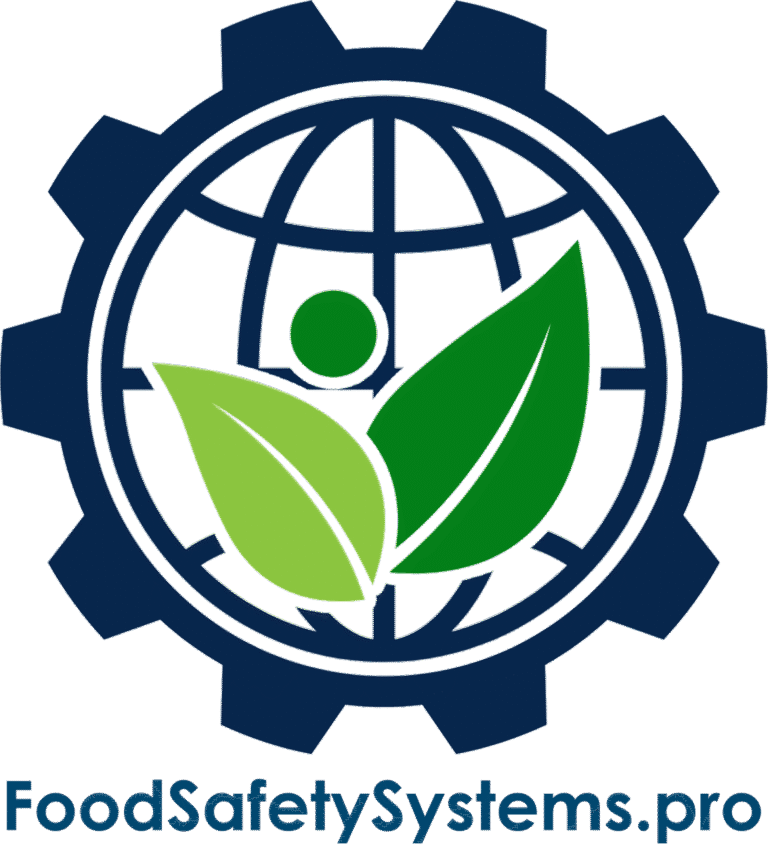Allergen Control Verification
Aligned with SQF Code Edition 9 – System Element 2.7.3
Requirement Overview
SQF Code Edition 9, System Element 2.7.3, states:
“Allergen control measures shall be verified through testing or validation where necessary to demonstrate effectiveness.”
Verifying allergen control measures ensures that cleaning, separation, and labeling procedures are working as intended—and helps reduce the risk of cross-contact and product recalls.
Disclaimer: Food Safety Systems is not affiliated with or endorsed by the Safe Quality Food Institute (SQFI). This article is for educational and compliance support purposes only. For official guidance, visit www.sqfi.com.

Key Compliance Objectives
-
✓ Develop a risk-based verification plan for allergens
✓ Scientifically validate cleaning and sanitation procedures
✓ Establish documented testing protocols
✓ Maintain a corrective action system for any failures
Step-by-Step Compliance Implementation
1. Develop an Allergen Verification Strategy
-
Testing Frequency by Risk Level:
| Risk Level | Verification Method | Recommended Frequency |
|---|---|---|
| High (e.g., peanut lines) | ELISA + ATP testing | After every cleaning cycle |
| Medium (shared lines) | Visual + ATP | Weekly |
| Low (dedicated equipment) | Visual inspection only | Monthly |
-
Evidence to Maintain:
-
• Approved verification plan and decision matrix
• Allergen risk assessments by product, process, and line
• Method justifications and testing protocols
- • Approved verification plan and decision matrix • Allergen risk assessments by product, process, and line • Method justifications and testing protocols
2. Validate Cleaning Procedures Scientifically
-
Validation Protocol Should Include:
-
• Worst-Case Scenario Testing – After the longest run or most difficult allergen
• Full Equipment Disassembly – Include hard-to-clean areas like gaskets or augers
• Scientific Testing Method – ELISA, PCR, or validated lateral flow kits
Evidence to Maintain:
-
• Validation reports with photos of teardown
• Swab locations and test results
• Justifications for selected test methods
- • Worst-Case Scenario Testing – After the longest run or most difficult allergen • Full Equipment Disassembly – Include hard-to-clean areas like gaskets or augers • Scientific Testing Method – ELISA, PCR, or validated lateral flow kits
- • Validation reports with photos of teardown • Swab locations and test results • Justifications for selected test methods
3. Implement Routine Allergen Testing
-
Testing Program Components:
-
• Swab locations: 10–20 sites per line (post-clean, pre-production)
• Use validated test kits appropriate to your product matrix
• Acceptance criteria: e.g., <5 ppm gluten or “not detected” for milk
Evidence to Maintain:
-
• Swab logs with dates, locations, and technician name
• Calibration and expiration records for test kits
• Trend reports showing pass/fail rates
- • Swab locations: 10–20 sites per line (post-clean, pre-production) • Use validated test kits appropriate to your product matrix • Acceptance criteria: e.g., <5 ppm gluten or “not detected” for milk
- • Swab logs with dates, locations, and technician name • Calibration and expiration records for test kits • Trend reports showing pass/fail rates
4. Monitor, Analyze & Improve
-
Data Management Best Practices:
-
• Conduct trend analysis to spot recurring hot spots
• Maintain logs of corrective actions for failed results
• Perform annual program reviews and revalidations as needed
Evidence to Maintain:
-
• Monthly analysis reports
• Root cause investigation documentation
• Training updates or procedural changes
- • Conduct trend analysis to spot recurring hot spots • Maintain logs of corrective actions for failed results • Perform annual program reviews and revalidations as needed
- • Monthly analysis reports • Root cause investigation documentation • Training updates or procedural changes
Common Audit Findings & Recommended Fixes
Audit Finding
Recommended Solution
No allergen cleaning validation
Conduct validation with ELISA or third-party lab
Swabs taken from wrong locations
Re-map swab zones and train testing staff
Unvalidated test kits used
Use only kits validated for your food matrix
No trend tracking or reviews
Implement monthly report analysis and escalation
| Audit Finding | Recommended Solution |
|---|---|
| No allergen cleaning validation | Conduct validation with ELISA or third-party lab |
| Swabs taken from wrong locations | Re-map swab zones and train testing staff |
| Unvalidated test kits used | Use only kits validated for your food matrix |
| No trend tracking or reviews | Implement monthly report analysis and escalation |
Auditor Verification Checklist
Expect auditors to:
-
• Review allergen testing protocols and risk assessment
• Verify swab logs and test results by line/product
• Examine equipment teardown procedures used in validation
• Confirm that corrective actions were implemented and verified
Implementation Roadmap
Build Your Program
-
✓ Develop a testing frequency matrix by risk level
✓ Map out swab sites for each line
Train and Validate
-
✓ Validate worst-case cleaning scenarios
✓ Certify QA staff in allergen swab testing procedures
Operate and Monitor
-
✓ Conduct routine tests (swabs, ELISA, ATP)
✓ Track results and log all corrective actions
Improve Continuously
-
✓ Perform quarterly reviews of testing data
✓ Revalidate cleaning procedures annually or after changes
Why This Matters?
Effective allergen verification:
-
✓ Confirms that your allergen control program works
✓ Reduces the risk of undeclared allergen recalls
✓ Demonstrates due diligence in customer and regulatory audits
✓ Protects brand reputation and consumer safety
Need Help Building or Validating Your Allergen Program?
Food Safety Systems provides:
-
✓ Allergen verification plan templates
✓ Cleaning validation protocols and test logs
✓ Equipment-specific swab site mapping templates
✓ Audit prep checklists and corrective action forms
Privacy Policy | Terms of Service | Disclaimer
Powered by Consultare Inc. Group, A Compliance Company







